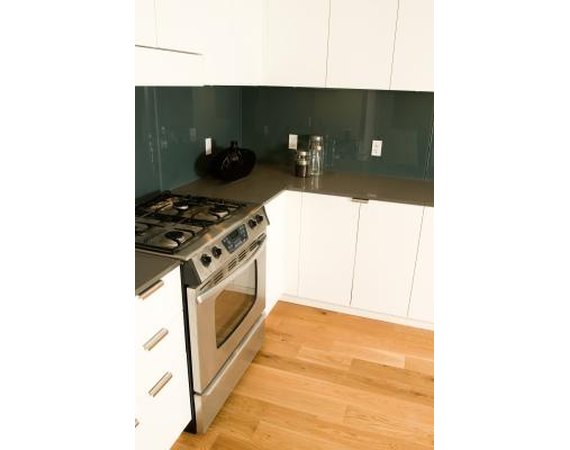
"Lazy Susan" has become a blanket term for a corner cabinet accessory that improves the cabinet's accessibility through the use of rotating or mobile shelves. The corner cabinet is often the most hated cabinet in the kitchen due to the space being difficult to access and items getting lost in the cavernous space. Fear not, the Lazy Susan is here to help. When choosing the look and type of device to buy, consider several factors to make sure the accessory fits your needs.
Instructions
- 1
Measure the available space for your Lazy Susan to determine the size and type to use. If you are purchasing new cabinets, you will measure the area where the cabinet will go. A typical corner base cabinet, including those housing a Susan, measures 33 inches or 36 inches deep and wide, from the back corner along the wall in each direction. If you are not buying new cabinets and planning to add that accessory, measure your existing cabinet and determine whether it is 33 or 36 inches. Note those dimensions as well as the cabinet opening width and height.
2Select the type of Lazy Susan that will fit the space. These include the Super Susan, full-circle, pie-cut, "D"-shaped and half-moon. The names refer to the shape of the rotating shelves. The type that you choose, should be based on the shape of cabinet and what you plan to store in the cabinet. All of the listed Susans can be retrofitted into an existing cabinet with the exception of the Super Susan. A Super Susan is the newest generation of Lazy Susan. It has a fixed shelf in the center of the cabinet with two independently rotating trays in the cabinet and no pole in the center. Due to the fixed shelf, the Super Susan is much stronger and larger than its cousins, but this also means it has to be built into a new cabinet box.
3Examine the shape of the door opening. If you have a traditional 33-inch or 36-inch corner cabinet, it will either have 90-degree piano-hinged door or a 45-degree diagonal door. If you have a 90-degree opening, the pie-cut shape is the best bet. A 90-degree cabinet can also accommodate a full-circle Susan, though its surface area has to become significantly smaller to fit in the same space. If you have a diagonal, you can select the full-circle or "D" shape. The "D" shape Susan can better use the space and thus is larger than the full-circle version. Last, but not least, the swing-out half-moon Susan is reserved solely for the dreaded blind-corner cabinet.
4Consider your budget. If you are purchasing a new kitchen, the Super Susan can be one of the most expensive cabinets in your kitchen, starting around $700 at the time of publication. A standard Lazy Susan cabinet is the less expensive option. But the lower price tag also includes a smaller-diameter surface and a weight capacity significantly lower than the Super Susan. Finally, price will be affected by the type of material the accessory is made of. Common materials, listed least expensive to most expensive, include plastic, medium-density fiberboard, wood and chrome-plated metal.
No comments:
Post a Comment